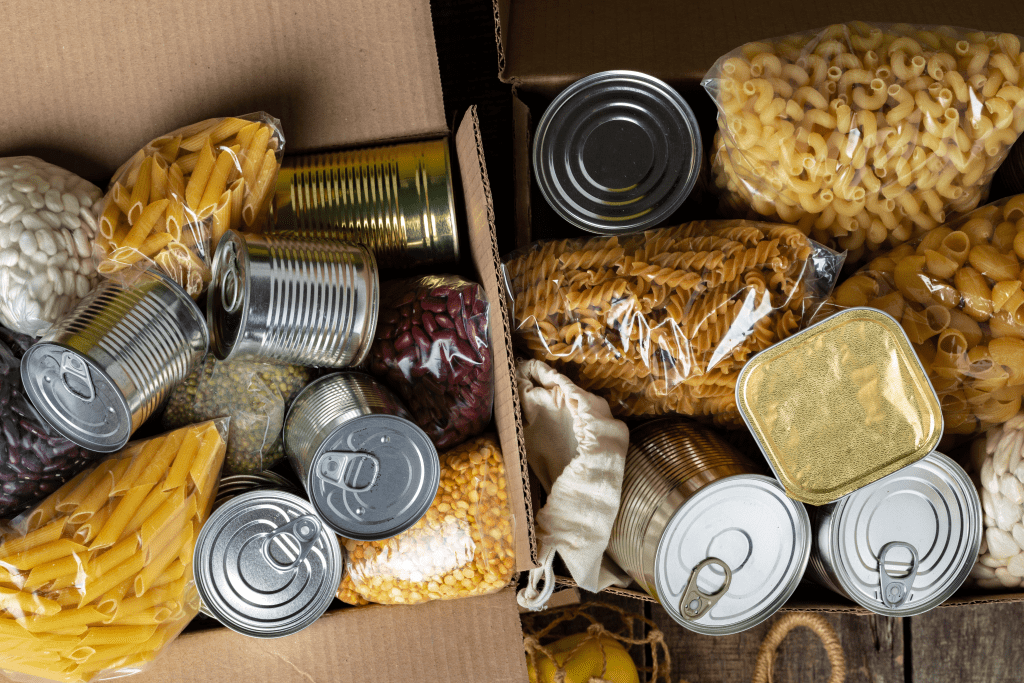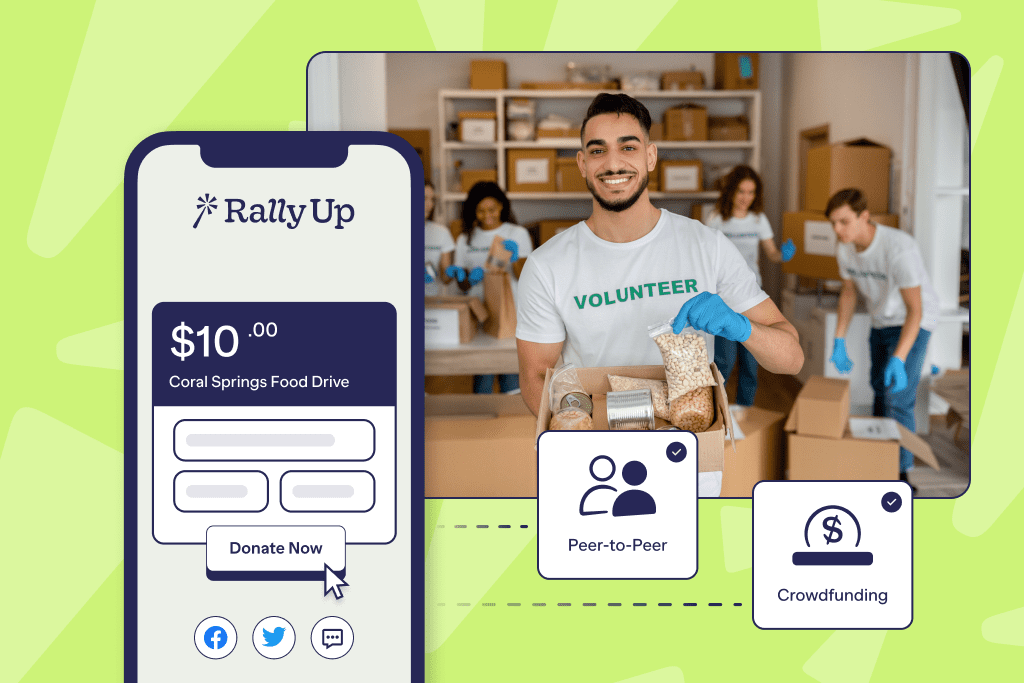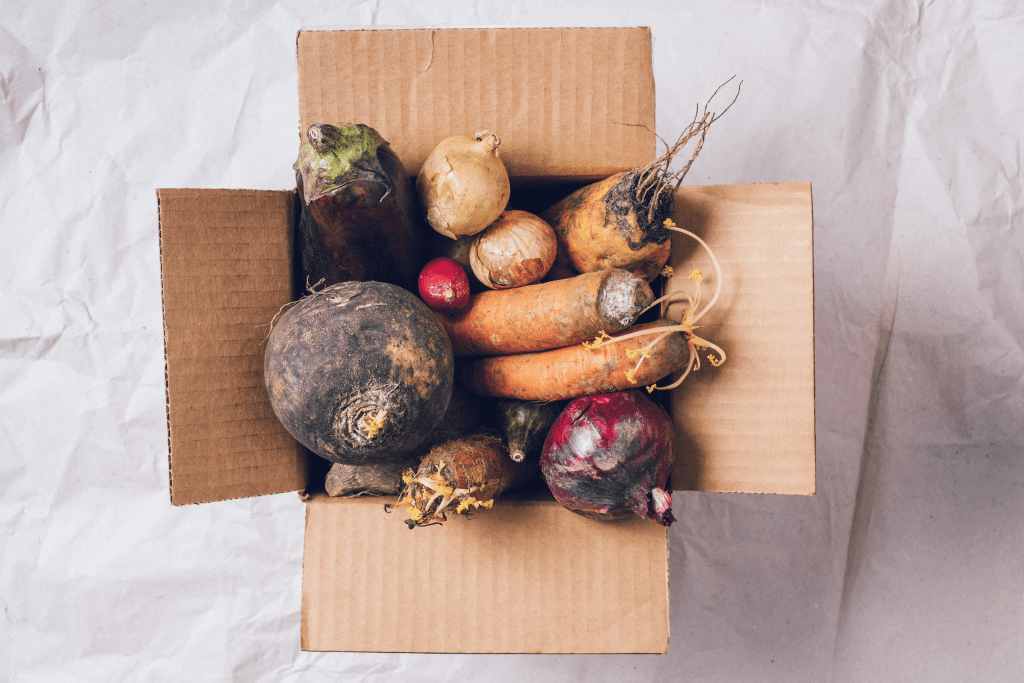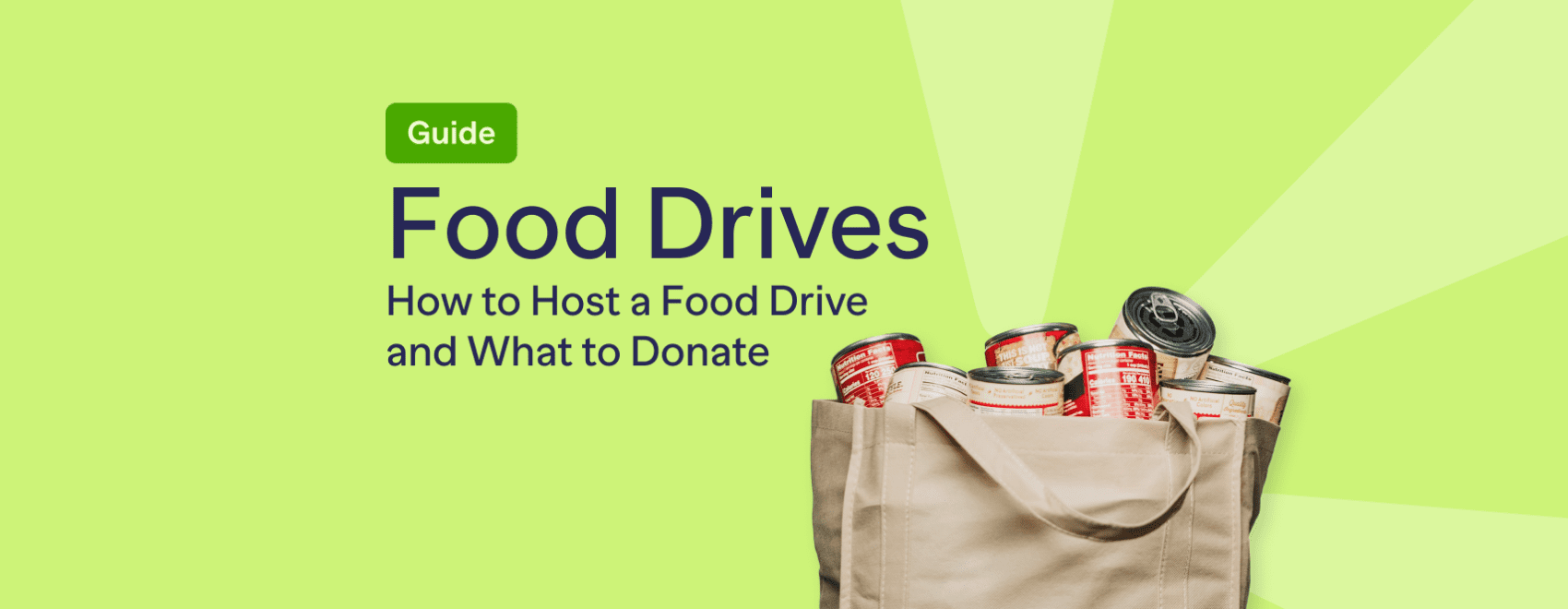Millions of people in America, including 12 million children, face food insecurity. These tragic numbers have only been exacerbated by the pandemic.
But it’s not all doom and gloom! Food banks and food pantries help deliver essential items to those in need. They lift spirits and send the message that no matter who you are or where you’re from, you deserve access to good nutrition.
Hunger affects all of us. That’s why hosting food drives and learning exactly what to donate to food banks is so important. Whether your nonprofit works with vulnerable folks or not, your organization has the opportunity to make major headlines in your community while lending a helping hand.
First, we break down how to run a food drive at your nonprofit. Then, we look at what to donate to food banks, and what NOT to donate. Ready to make a big difference? Let’s dive in.
How to Host a Food Drive
While donating to food banks and shelters is wonderful, a nonprofit can really make a name for itself in the wider community by hosting a food drive. You don’t need any special skills or fancy equipment, either. All it takes is a solid team and a good dose of holiday spirit!

What is a food drive?
Food drives help stock local food banks and soup kitchens with much-needed items.
Instead of just dropping off a bag of groceries, local nonprofits, schools, and businesses collect large amounts of non-perishable items on behalf of food banks.

Sometimes, food banks hold special holiday meals that help vulnerable populations get a warm meal and a bit of cheer.
A well-organized food drive not only provides critical hunger relief, but also addresses the wider issue of food insecurity in your community and lays the foundation for ongoing collaboration with food banks and food pantries.
Organizing a Food Drive: 7 Steps to Success
If you want to organize a food drive at your nonprofit, you can make an important difference in your community while exploring ways to be both generous and creative with resources and advertising.

- Team Up. First, get a team of volunteers together. Whether it’s your nonprofit’s staff, local students, or neighbors, the more helping hands, the better!
- Set dates. When will your food drive begin and end? Give it at least a week, but even a month can work. If you aim for ending on a specific date – say, Christmas or the Fourth of July – it’s easier to get people excited about donating and makes themed promotion more fun.
- Contact a local group. To figure out which group to support, begin by reaching out to local food banks, food shelters, or food pantries and asking them about their needs. Whether you’re operating in the US or the UK, there are online resources to help you narrow down which groups are located near you. Most would be thrilled to have you onboard, especially during the winter season, when food insecurity surges.
- Advertise. Get strategic about marketing. Post info about food collection points to Facebook, Twitter, or an online platform. Local media outlets will often promote your efforts, too, especially during holidays. Not only will you get more donations, but it lets your nonprofit shine as a community leader. Hello, well-earned publicity!
- Collect.
- Place bins in schools, churches, and community centers. Ask local grocery stores if you can stick a bin near their entryway.
- If you’re in an urban area, the lobbies of apartment buildings are smart places to put collection bins. Not only do they get tons of daily traffic from employees, residents, and visitors, but depending on the size of the building, you’ll be reaching hundreds of residents at once. You can even encourage some friendly competition to see which floor will donate the most items!
- Consider including a list of much-needed items near the collection bin, and a polite reminder to avoid donating perishables.
- Deliver while advertising. This is the tricky part. While some groups will pick up donations, most won’t. Since bins can get heavy, you’ll have to enlist a committed crew for picking up and delivering food. Treat it like an exciting winter event that everyone in your organization can take part in. Get husbands, BFFs, and kids to pitch in with driving, carrying, and dropping off food. Carpool, blast some holiday tunes, and take tons of photos! You can even livestream it so your supporters can cheer you on!
- Keep the momentum going. Did your organization raise 1k pounds worth of groceries for families in need? Did you get a chance to chat with any of the folks who benefitted from your contributions? Share the good news across all your channels and don’t forget to thank all your generous donors. It raises awareness about hunger in your community while generating extra love for your awesome nonprofit.
Promoting Your Food Drive
No community-based event will get much traction if nobody knows about it! Mobilize all your channels to get the word out about your food drive to increase donations.

Step #1: Go Old School
The traditional method of promotion relies primarily on handmade adverts and word-of-mouth.
- Display colorful flyers and posters in local coffee shops, grocery stores, community centers, schools, and churches.
- Reach out to local news organizations. The classifieds sections count as news!
- Don’t forget that school newspapers, community newsletters, and bulletin boards at faith-based organizations see lots of regular, dedicated traffic.
Step #2: Get Social
When more than half the world’s population has a Facebook account, it makes good sense to use social media to your advantage.
- Create a Facebook page and an Instagram account dedicated to your food drive. Include catchy pics and invite friends to like, follow, and share your page.
- Make a clever hashtag so your event is easier to share. Use your city name or the season for inspiration, like #summerfooddrive2022 or #coralspringsgives.
- Post regular updates with suggestions of what to donate (and what NOT to donate, more on that below) along with motivating messages, like “Next time you’re at the store, don’t forget to grab a few boxes of cereal for #coralspringsgives!” to keep enthusiasm high.
Step #3: Go Digital
If you’re not leveraging the unique power of fundraising software, you’re missing out. Thanks to platforms like RallyUp, your nonprofit can increase the efficacy of your food drive and reach a much wider base of supporters.
- Set up a donation page. Did you know that food banks actually prefer to get money over food donations? They use the cash to offset operational costs, buy perishables like fruit and vegetables, and pay for transportation. So, while collecting food is essential, a beautiful and easy-to-use donation page lets people support you even if they don’t have time to drop off groceries (RallyUp helps you do it for free!). It’s a good idea to tell people exactly what their donation will cover, i.e. $10 buys 4 boxes of cereal, while $20 covers an entire Thanksgiving turkey.
- Get crowdfunded. To spread your food drive message even further, create a crowdfunding campaign that lets supporters all across the globe contribute to your hunger relief efforts. You can donate their contributions directly to the food pantry you’re working with.
- Tap into peer-to-peer support. Your existing network, from your friends to your coworkers, already believes in you, so channel that support with peer-to-peer fundraising. By encouraging all your pals (and pals of pals) to come up with their own creative strategies to help out, you raise both cash and awareness.
What to Donate to Your Local Food Bank
We reached out to several food banks and food pantries in major cities to ask which items they need the most right now. While this list might vary by location – for example, soup might be less popular in Florida – it’s still a solid place to start.

No matter where you are, stay away from produce or anything that requires refrigeration. Even though fruits and vegetables are essential to a healthy diet, they’re fussy and hard to keep fresh.
#1: Cooking oils (vegetable, sunflower, extra virgin) and broths
Every food bank or pantry we contacted emphasized that cooking oils are a big hit with their customers. Why? Well, oil is essential for pretty much every kitchen on the planet. Broth, too, makes even basic meals tastier and more nutritious. Neither oil nor broth are cheap, though, so food banks are constantly running low. So, be sure to grab an extra bottle next time you’re doing your weekly grocery shopping.
#2: Peanut butter
This one’s obvious: plenty of protein that’s shelf-stable and delicious? Toss it in your cart.
#3: Canned Soups
Think hearty stews, spaghetti and meatballs, and chili. This one’s popular during the colder months for obvious reasons. Tip: stick to pop-top cans. Many families don’t have access to can openers, and some folks will be consuming your donation on the go.
#4: White or brown rice? It depends
Believe it or not, rice can get controversial. Brown rice is significantly more nutritious than its white counterpart, and many families like it precisely for that reason. That said, some of the food banks we spoke to said that their customers are less familiar with brown rice and prefer the white stuff. If you’re on the fence, it’s always a good idea to give your local food bank a call. If you opt for white rice, just be sure that it’s fortified with plenty of vitamins.
#5: Pasta
Most pantries prefer whole grain varieties, and if you’re feeling extra, you can even go for a gluten-free option.
#6: Breakfast cereal
This stuff just flies off the shelves. While all breakfast cereals are popular with food bank customers, try to aim for low-sugar varieties.
#7: Granola bars, oatmeal packets, and trail mix
Think about it: many people who frequent food banks are homeless, spending a good portion of the day on their feet. While most of us can get what we need by walking from one room to the next, vulnerable people might need to walk several miles just to find a toilet. What do they need most, especially in winter? Stuff they can carry. Go for food that’s nutritious and can easily fit into a pocket. Protein bars and nuts are a good choice. Just stay away from candy.
#8: Specialty items
Everyone deserves a treat every once in a while, especially during the chilly winter months. Can’t decide what to get? Just think about what you like to see in your own pantry and go from there. Low-income families appreciate things like pickles, honey, olives, and artisan crackers. Coffee is always a crowd pleaser (instant is best). Keep in mind, though, that some food pantries don’t accept items in glass jars.
#9: Household essentials and toiletries
Programs like SNAP (the government’s Supplemental Nutrition Assistance Program, popularly referred to as “food stamps”) don’t allow purchases of basics like shampoo, toothbrushes, diapers, or feminine hygiene products. So those essentials are always welcome donations. Tip: food bank reps suggest avoiding toiletries with alcohol in them.
#10: Paper bags
Do you have extra paper bags lying around? When you drop off your donation, add them in. Just make sure they have handles and are clean. It makes carrying groceries home that much easier! Also, the people who find themselves shopping in food banks often have hungry pets waiting at home. Consider donating unopened cat or dog food, too!
What NOT to Donate to Food Banks

#1: Anything perishable
Avoid donating fresh produce, anything that needs to be refrigerated, baked goods, or leftovers.
#2: Expired items
This one is easy: if your family won’t eat it, other families won’t, either.
#3: Sardines
This is another controversial pantry staple. The food bank reps we spoke to said that their customers don’t like sardines. Still, canned tuna or salmon is usually a big hit!
#4: Beans
Beans are delish and pack a massive protein punch, but most food pantries already have beans for days. It pays to call ahead, but if you’re set on donating beans, go for it, just remember that other items are higher priority.
Make a Difference with Hunger Relief
Whether you’re hosting a much-needed food drive or collecting donations in your community, giving back while raising awareness is a beautiful thing.
Want to make your event an immediate success? Check out RallyUp.
RallyUp is a leading fundraising platform, enabling small groups, nonprofit organizations, enterprise CSR programs, and YOU to quickly create and publish a fundraising page for your event completely FREE.
Rather than sharing a photo and description on Facebook (hoping it takes off), back it up with a professionally designed page where potential donors can learn more about your cause, share it on their social media, and donate easily.
There are tons of ways to support vulnerable populations during all seasons, so get out there and make a difference with our help!
